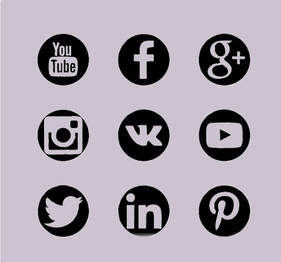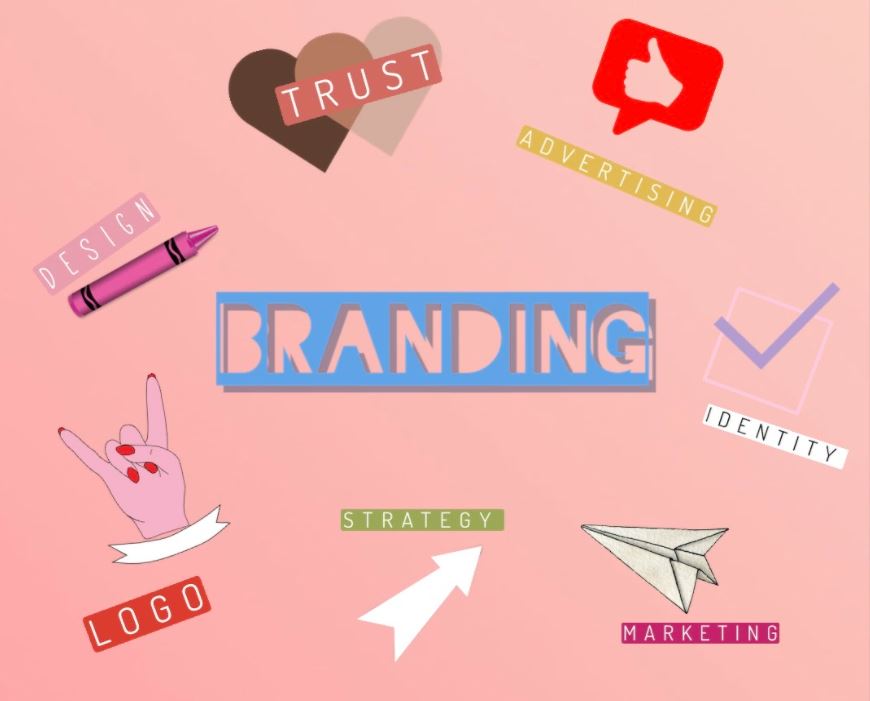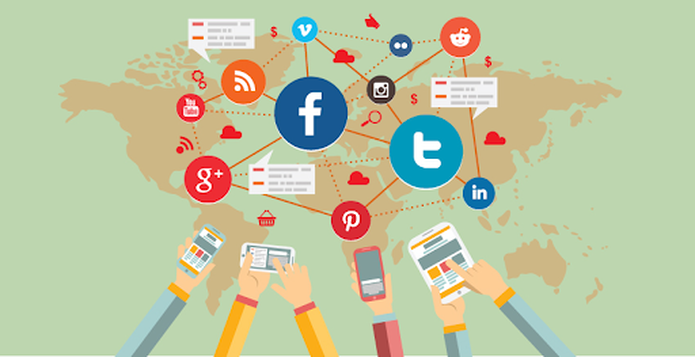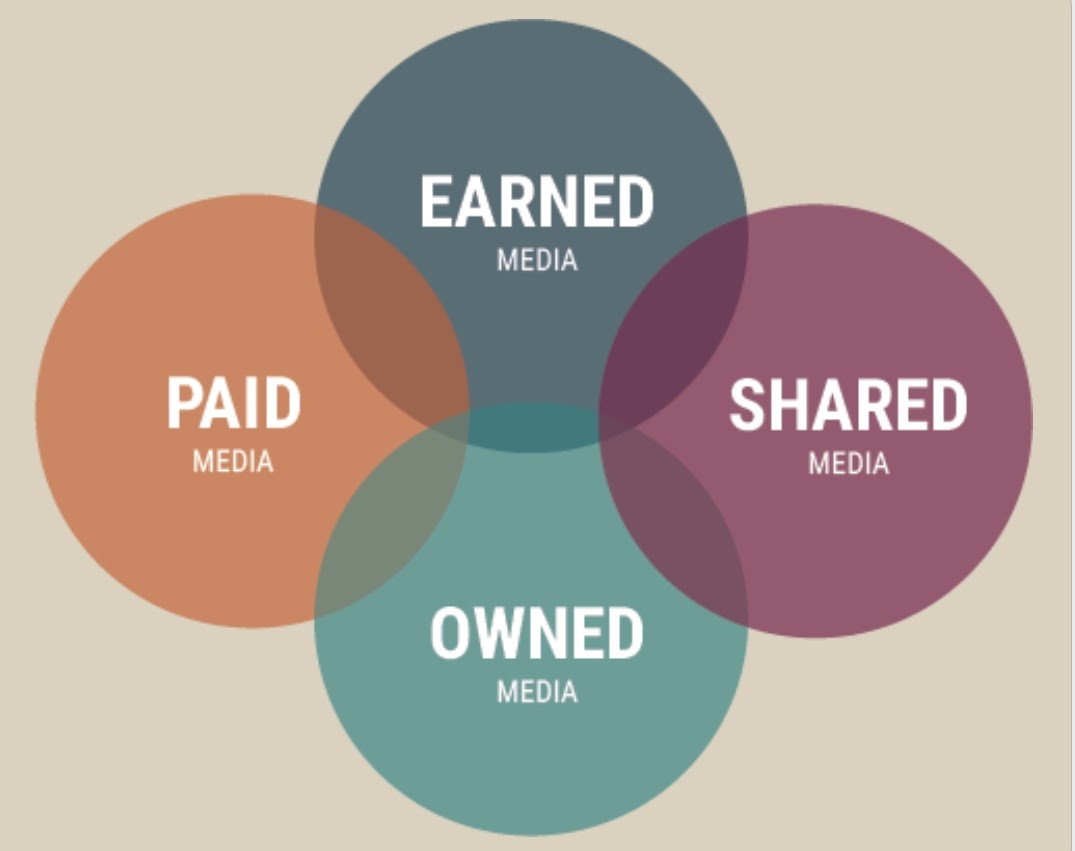|
There is a huge clutter problem in the marketplace. There are five different forms of clutter: Product, Feature, Advertising, Message, and Media clutter. All of which creates a distraction for consumers; it also creates a problem for companies as they face the challenge of standing out from all the clutter out there. Branding helps companies avoid being lost in the clutter.
What is Branding? So, we have all heard of a ‘brand’ and can even think of some examples such as Apple or Coca Cola at a moment's notice. However, we do not think about all the things that go on behind the scenes for a brand to be as successful as Apple or Coca Cola. That is where branding comes into play. A brand is in essence the gut feeling and perception that consumers have about a person, company, or service. Branding is the process where a company differentiates itself from the clutter to be known by the public. In short, think of branding as the efforts that a company goes through in order to have the brand they want. A brand can be more than just a company, it can be a person or service as well. Think of your favorite athlete or celebrity, they themselves are a brand. Not only the rich and famous can have their own brand, but you can also too. When starting your professional career think about what you want others to immediately think of you as. For example, as I start my career, I want to be authentically me. I want my clients to know that when they work with me, they are getting the real me (i.e. always Audrey Marie). For me, relationships are what I want my brand to be centered around. Why Branding is Important Branding allows the company, service, or person to make an impression on consumers. Without branding the consumers will not know what to expect from you. The most successful brands out there are brands that have strong brand recognition and allow the consumers to feel a certain way about them before they even buy the product. For example, I need some tennis shoes and go to the store. There are two different shoes that are practically the same style, one being Nike and the other being an off-brand shoe that I have never heard of before. I, personally, will then pick the Nike brand over the other one because I am familiar with the brand and I know the kind of quality I am getting from the shoe. Despite the other shoe being the same style and perhaps costing less money, it does not matter since I already have a relationship with the brand Nike and trust them. How to Have a Successful Brand Now, just because you may not be as big as the brand Nike, does not mean that you cannot succeed. You must start somewhere, just as Nike had to do once before. To be a successful brand you need to figure out what the brand’s purpose is. The brand's purpose statement and mission statement can be interchangeable. After you know what your mission/ purpose is, you need to set some goals up for the brand and create a vision statement. This is to show where you want the brand to go towards in the future. You should do some research on competing brands in your market to understand your placement in the industry and maybe find ways to make your brand stick out from the competition. The biggest thing for a brand to be successful is to be different and good. To be different and unique is needed for a brand's success so you do not just blend in and get drowned by all the clutter that is out there. You need to stand out. However, you can stand out for bad reasons and that is not what is going to drive consumers to your brand. You also need to be good at whatever it is that your brand's purpose is. With a combination of being different and good, your brand is on its way to success. Always, Audrey Marie
0 Comments
Media writing can either make or break a company. Due to social distancing and the inability to meet people face-to-face, media writing is now more important than ever. Good media writers have the skills to get their message across in multiple channels and connect with various audiences. Read on for the 5 rules to follow to become a good media writer!  Rule 1: Know Your Audience In order to create content in the first place, you need to understand who your target audience is and what they are interested in. Knowing your audience is essential for media writing; without an audience you have no framework on what the content should be about, or where it should be placed. It is key for a media writers’ success to understand the audience and to relate to both their needs and their wants. If you are unable to identify who your audience is, then the message will not be successful. For example, if you know your audience consists of males aged 55-65 years old, then your message and channels would differ than if your audience consisted of females aged 20-25 years old. A good way to know your audience is to make an audience profile before you start creating content. Rule 2: Write for Your Reader, Not Yourself Writing for the reader means keeping the audience in mind while you are creating content. Good media writers keep the readers in mind and create content that the audience would want to see, even if it is not necessarily what you would want to see. As the writer you may not identify with who the target reader will be. Some key questions to ask yourself in order to best serve your reader and to keep them in mind are: What do they want from me? And how do they want it?  Rule 3: Put Content Where the Readers Are Keep in mind not only the content itself, but the channel you use for your content in order to reach the audience. In order to become a good media writer it is crucial to keep up with who the audience is and where they go for content. This rule is especially important because if you put content where there are no readers, or where the wrong readers are, it will not properly serve its purpose. Understanding the right channel to use is crucial for media writers in order to reach the readers. Just as it is a rule in real estate, location matters when it comes to where you put your content.  Rule 4: Tweak the Message for Different Channels Each channel is different; therefore, the message should be as well. Although social media platforms are all similar in a sense, each platform is different in how users access content. Media writers should understand all the different platforms and channels and know which one is best suited for that specific message. This rule is important because if the message is on the wrong channel it will never be seen by the correct audience. Rule 5: Be Authentic and Genuine
Be the writer that users can trust. Don’t endorse or say things that you don’t believe in or just are not true. Take the time and do your research if you need to, assume your target audience knows enough about your topic to see through anything untrue. This rule is instrumental in becoming a good media writer because your audience will be able to tell if you are genuine or not. If you create non authentic content, then you will lose both credibility and trust in the audience. Always, Audrey Marie Social media has become one of the best ways for companies to interact with their customers and build relationships. Companies need to understand social media marketing now more than ever, as people are on social media more often due to stay at home orders. The Coronavirus crisis has left companies to rely heavily on their social media appearance and online presence in an effort to stay relevant and open for business. Read on for some helpful tips on how to manage your company's social media accounts during a global pandemic!  Be Mindful with Posts Though social media users are engaging more than ever, it is still important to be mindful while posting. As a company, business will not be as usual, and neither should your posts. There has never been a global pandemic in our, and most likely your business’, lifetime so it is natural that you may be questioning whether it is the right time to post about the upcoming summer launch. The simple answer is no. For now, it would be best to save any upcoming campaigns and launches for a later date. The content and campaigns that you originally had planned most likely do not reflect on the current needs of your customers. The last thing you want right now is to seem insensitive, and oblivious to the world around you. Do Not Take Advantage Going along with being mindful - do not take advantage of the current crisis. Even though consumers are engaging more than ever on social media, it does not give you permission to exploit the situation for personal gain. Remember that there will be a time where this all ends, and customers will remember those who cared, and those who didn’t. This does not mean you should not be posting at all, it just means that you need to be more sensitive with every post you make. Again, it is okay to post, as a business you need to in order to stay afloat and sell products; however, just make sure you do not take advantage and use the coronavirus as a means to capitalize on.  How You Can Help Everyone in some way is impacted by the coronavirus crisis; however, that does not mean that your company needs to be on the front lines posting about it every day. Reflect on what positive actions your company can take to relieve any stresses or pains that customers are facing at this time. It may not even be directly COVID-19 related. For example, if you are in the food industry perhaps post a coupon code that gives some leeway with free deliveries or take out specials. Or, if you are in the entertainment industry, post something that gives everyone a laugh. Just because your company does not fall into the healthcare sector does not mean that you are not able to help out during this crisis. Communicate Your Ongoing Support
During the current crisis the best way to be on social media is in a supportive capacity. Use this time to clearly communicate to your customers on what measures the company is taking to stay safe, as well as any efforts that are taking place to better support the staff, customers and community. If the company has reduced hours and employees are working remotely, then share that on your social media. Additionally, it is important to allow the customers a place to voice any concerns they have. Communication is key in maintaining a positive relationship with your customers. When it is at all possible, followup with any client concerns, you can use your social media account for two-way communication to your viewers. Social media allows you the platform to stay connected during the crisis, use it wisely to ensure your customers that you are still here to support them. Always, Audrey Marie The PESO model stands for Paid, Earned, Shared, and Owned media. The model helps segment the different channels that a company or brand uses. The PESO model integrates the four different forms of media. It is important to understand the various types of media and which one(s) are best suited for your brand.  Paid Media Paid Media is any purchased message or content from a company or brand. This form of media is easily tracked and controlled, making it easy to know the results from the paid content. This form of media is a high cost compared to the other forms, and it is not as trusted by consumers as more organic media such as earned media is. Some examples of paid media are:
Paid media can overlap with shared media, for example with paid influencer content. This type of media form is a great way to drive more traffic and awareness to your brand, especially for companies that are just getting started. However, this means of media can get expensive with competition, so that is something to keep in mind when deciding if paid media is right for you.  Earned Media Earned media is most commonly produced by journalists or bloggers, but it can also be known as the more organic word of mouth form of media. This type of media cannot be paid for or owned by the brand that is receiving the media. Due to earned media’s more authentic and genuine way it is the most trusted form of media out there. Additionally, earned media can overlap with shared media. Some examples of earned media are from:
Although this form is important to have, such as some reviews or customer testimonials, earned media does have some cons. Earned media cannot be controlled, and therefore, some negative or unwanted attention may come from it. In addition, you are not able to track correlation of success of any earned media to your brand. Overall, earned media is out of your and your brands’ hands; the best way to ensure positive earned media is to deliver quality content. Earned media takes time, it is not as effective as far as timeliness goes compared to the other types of media.  Shared Media Shared media is the form that allows others to share and pass along your message amongst their community in social channels. This type of media often overlaps with the other three forms; paid, earned, and owned media, due to the new age of social media. Shared media can be trustful despite possibly being paid, for example, if an influencer is endorsing or promoting a product on their social media, it is considered both shared and paid. However, it would become not trustworthy if the content that the influencer is promoting and sharing is not something they actually believe in or use themselves. Here are some examples of shared media forms: Additionally, shared media can range from costing nothing to costing lots of money if you decide to get an influencer involved for example. Shared media can range in the level of your control of the message as well. Depending on the overlap of other media forms, the message could be from your own company, or be paid for. In those cases, the message that is shared can be controlled, but who sees it will not be. On the contrary, earned media that is shared is not controlled whatsoever by your brand or company and can still be shared with anyone. Overall, shared media is a useful tool as it can reach many people at once, however it is not predictable with the outcome.  Owned Media Lastly, there is owned media, which is anything that you and your brand creates. This form of media is completely controlled by you. Owned media generally costs less compared to other forms; however, it has a limited audience. Owned media relies on the paid, shared, and earned media to drive traffic back to the brand. Examples that owned media consists of are:
It is crucial to keep in mind the upkeep involved with owned media to ensure everything is up to date and has content that people want to view. Owned media is all about putting time upfront in creating the content; the continuous flow of new content is what will make your website for example, successful. Always, Audrey Marie
|




